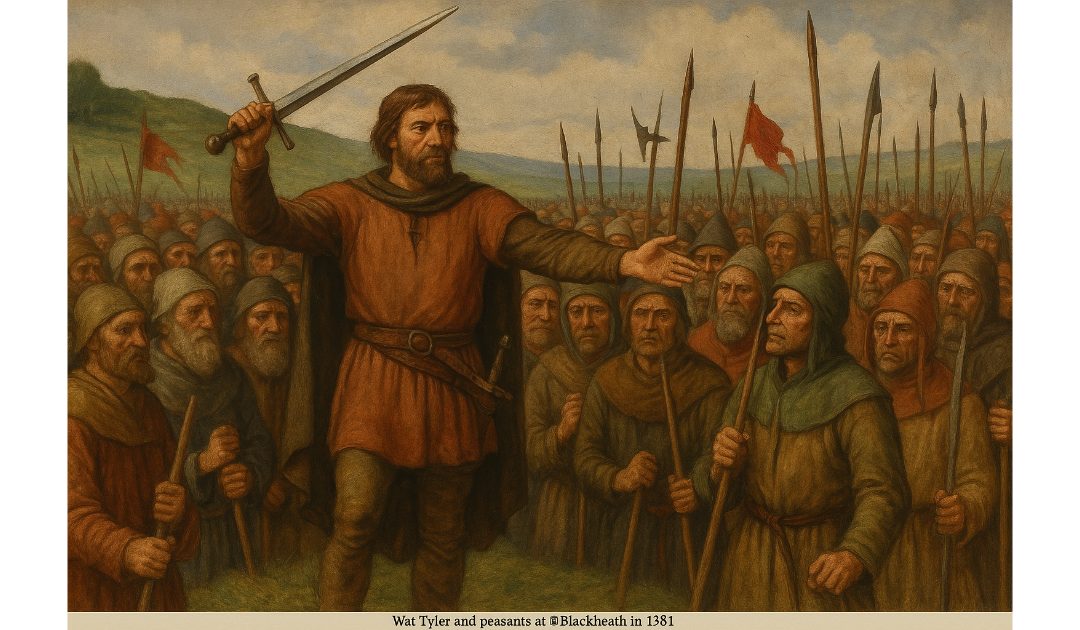On the 12th of June, 1381, rebels assembled at Blackheath, just outside London, during the Peasants’ Revolt. In researching this post, a myth that I held to be true since childhood, has been shattered. I was born and grew up within a few miles of Blackheath. The story was always that during the Black Death the dead were buried on the heath, hence the name. Yet in 1166, centuries before the either Black Death of the mid 14th century, or the Great Plague of 1665, the name of the area is recorded as Blachehedfeld, meaning black heath field. However the roots of the Peasants’ Revolt can be traced back to the aftermath of the Black Death, which swept through Europe from 1347 to 1351, killing an estimated one-third of the population. This had a profound impact on the socio-economic landscape of medieval England. With a drastically reduced labour force, the surviving peasants found themselves in a unique position to demand higher wages and better living conditions. However, the English ruling class, through the Statute of Labourers in 1351, attempted to freeze wages and prohibit workers from seeking higher pay elsewhere, exacerbating tensions between the classes.
By 1381, the situation had become explosive. King Richard II’s government, in desperate need of funds to finance military campaigns, imposed a series of poll taxes. The cumulative effect of these taxes, imposed on every adult regardless of income, was deeply resented by the peasantry and poorer townsfolk, who bore the brunt of this financial burden.
The revolt began in Essex in May 1381, rapidly spreading to Kent and other parts of South East England. The rebels, led by figures such as Wat Tyler and John Ball, a radical cleric, marched on London, demanding the end of serfdom and the abolition of the poll tax. They also sought the dismissal of some of the King’s most unpopular ministers.
When the rebels reached London, they were initially successful, storming the Tower of London and executing unpopular officials like Simon Sudbury, the Archbishop of Canterbury, and Robert Hales, the Lord High Treasurer. King Richard II, just 14 years old at the time, agreed to meet the rebels at Mile End and granted some of their demands in an attempt to pacify them.
However, the situation took a violent turn during a subsequent meeting at Smithfield on 15 June 1381. Wat Tyler was killed under disputed circumstances, effectively leaderless, the revolt began to falter.
In the aftermath, Richard II quickly rescinded the concessions he had made. The leaders of the revolt were hunted down and executed, and the rebellion was suppressed. Although the immediate demands of the peasants were not met, the revolt had lasting impacts. It highlighted the deep-seated issues of social inequality and the unsustainable nature of the feudal system.
Over the following decades, the rigid social structures began to soften. Serfdom gradually declined, and the economic and social mobility of the peasantry slowly improved. Furthermore, the Peasants’ Revolt instilled a sense of caution among the ruling classes about the potential for mass uprisings, subtly influencing policy and governance decisions.
While the Peasants’ Revolt of 1381 did not achieve its immediate goals, it signified a pivotal moment in the history of English society. It laid the groundwork for future social changes and underscored the importance of addressing the grievances of the lower classes, making it a noteworthy event in the march towards modern democracy.

